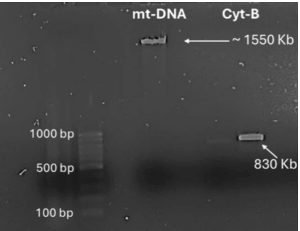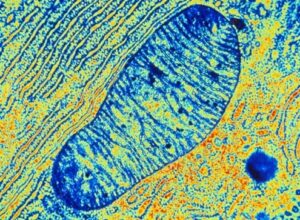Are you working with nucleic acids, proteins, or other biomolecules from specific organelles?
The Bullet Blender®—when paired with the appropriate beads and settings—offers a fast, reliable method for isolating organelles from animal tissues, plant samples, and cultured cells.
This versatile tool supports a wide range of downstream applications, from protein profiling to organelle-specific metabolomics.
One particularly valuable use is the isolation of mitochondrial DNA (mtDNA), which plays a central role in studies of genetics, disease mechanisms, and cellular energetics.
Mitochondrial DNA (mtDNA) isolation is a key technique used in many industries today. Unlike regular DNA found in the cell’s nucleus, mtDNA gives us special insights into cellular energy production, how we age, and hereditary diseases.
Industries in medicine, genetics, and even forensics use mtDNA isolation to create better treatments, solve crimes, and improve health tests. Having reliable tools to support mitochondrial DNA isolation is so important—especially when consistency and efficiency matter.
One such tool that’s making a big impact in lab workflows is the Bullet Blender, which simplifies and strengthens biomolecule isolation protocols.
A newly developed and validated protocol is now available for isolating mitochondria from cultured cells using the Bullet Blender® tissue homogenizer. This method offers a fast, reproducible, and scalable alternative to traditional techniques, making it ideal for researchers focused on mitochondrial biology.
Why Switch to the Bullet Blender?
Conventional mitochondrial isolation often relies on manual homogenization, which can be inconsistent and time-consuming.
The Bullet Blender provides standardized mechanical disruption, reducing variability and preserving mitochondrial integrity across samples.
Protocol Overview
- Cell Preparation
Cultured cells are harvested and resuspended in a chilled buffer optimized for mitochondrial preservation. - Homogenization
Samples are loaded into Bullet Blender tubes with zirconium oxide beads and processed at an optimized speed and time to ensure efficient cell lysis without compromising mitochondrial structure. - Differential Centrifugation
Following homogenization, standard centrifugation steps are used to sequentially remove nuclei and debris, yielding a clean mitochondrial fraction. - Validation
Yield and purity were confirmed via gel analysis, demonstrating excellent reproducibility and compatibility with downstream applications.

Figure A: gel with mitochondrial DNA and its PCR product of Cyt-B mitochondrial gene from VERO cells. Absence of GAPDH gene confirms the extraction of pure mitochondrial DNA using the downstream mtDNA isolation method.

Figure B: Lane 1: DNA Marker, Lane 2: mtDNA from protocol using manual homogenization method. Lane 3: mtDNA from Bullet Blender homogenization method. The sharp DNA band on the gel indicates the fragment is intact and pure enough to be reliably used in downstream applications.
Key Advantages
- High consistency across replicates
- Reduced hands-on time
- Scalable for different cell types and volumes
- Compatible with various downstream workflows
Click here for new protocol RS18-0280A Mitochondria Isolation from VERO E6 Cells
Let us know how our newly developed protocol accelerates your mitochondrial research.

